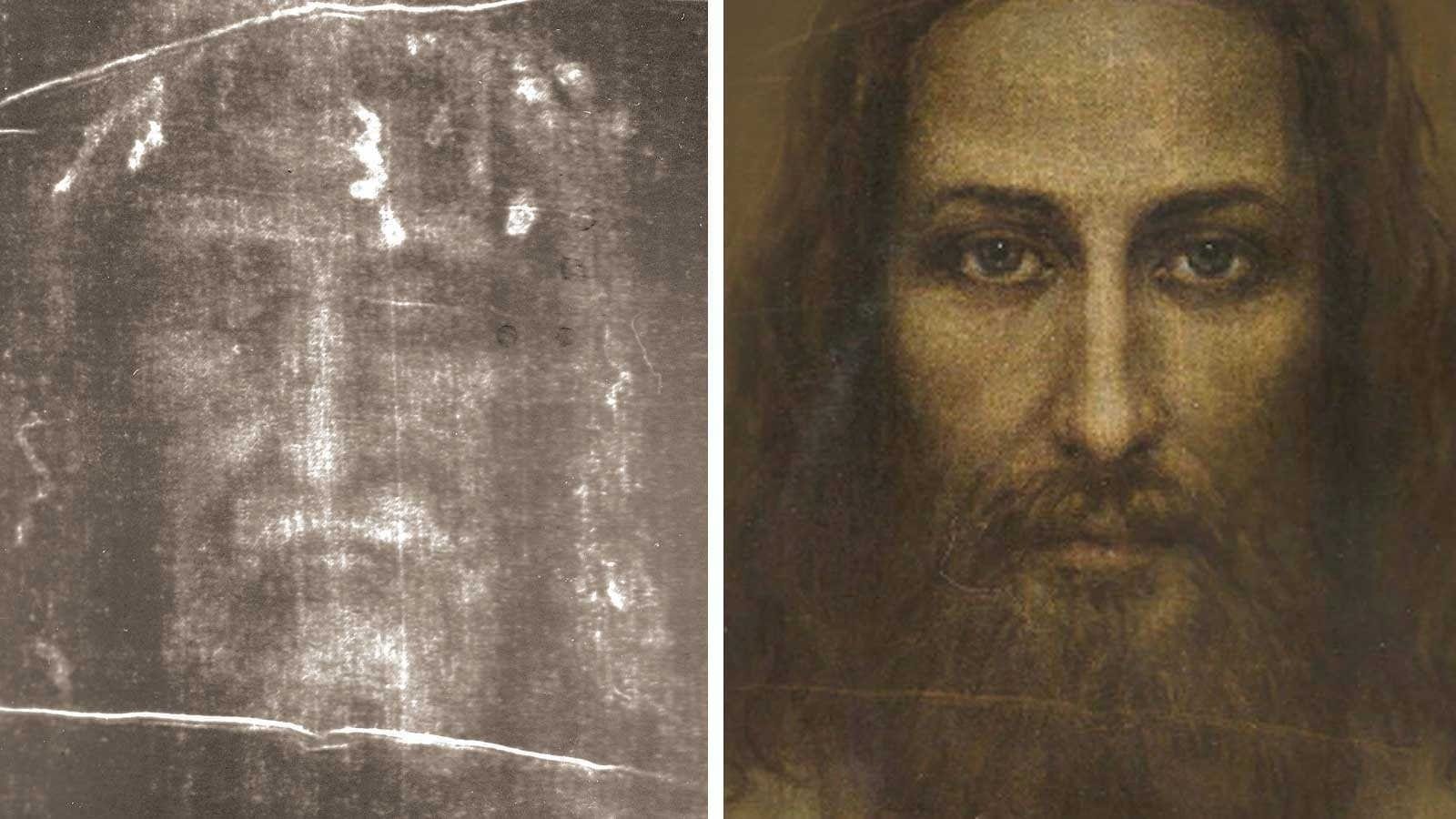The Shroud of Turin: Authentic or Forgery?


I have been hearing about the Shroud of Turing for many years. I thought that it looked interesting and that it may be authentic, but I did not spend much time reading about it. I have recently devoted time researching it and I’m convinced that it is authentic. By that I mean that it is truly the three dimensional and somewhat transparent image (like X Ray) of a crucified man in 1st Century Judea and not a forgery of someone just painting it. I have also come to believe that the man’s image was that of Jesus, but I’ll cover that in the next blog post. This research has helped me better understand the intensity of the suffering that our Lord Jesus Christ humbly and willingly went through for us. As I mentioned, this is Part I of a two part blog post. On this blog post I cover why I’m convinced that the image is authentic.
What is it?
The Shroud of Turin is a burial shroud of linen cloth, woven in an expensive 3:1 herringbone pattern. Measuring 14’ 3” in length and 3’ 7” in width, it is a single piece of cloth bearing a front and back image of a crucified man. Imagine the loved ones putting the cloth on a ledge in a rock tomb, laying down the man in half of the shroud, and putting the rest over the top. The shroud has been venerated as the burial cloth of Jesus since at least 1355 when it was displayed for the first time in Lirey, France. It’s likely that early Christians venerated the shroud and carefully safeguarded it for many years before that until it came to this family’s ancestor, who was a leader of the crusades. It is currently in the Catholic Chapel of the Holy Shroud in Turin, Italy.
The image is a faint sepia colored 3 dimensional image of a crucified man with dark brown stains—confirmed now to contain blood particles. The blood stains got on the linen before the image was created. The shroud has some damage from a fire in the 16th century. Amazingly, the image is a photographic negative on a material that is not photo sensitive (done before anyone knew what a photo negative was). When you take a photo of it and then look at the negative, it looks normal.
The 1978 Shroud of Turin Research Project investigations confirmed the image was not formed by dyes, chemicals, vapors, or scorching and was not formed by brush strokes. They determined the image is not a forgery, but they couldn’t account for naturalistic explanations for its formation. These researches included 32 scientists from the Los Alamos Lab, the Pasadena Propulsion Laboratory, and other prestigious research centers.
How old is it?
After a Carbon-14 test was performed, four dating tests were performed on fibers from the Shroud:
- A vanillin test by Dr. Raymond Rogers.
- Two spectroscopic analyses (of Dr. Giulio Fanti, et al.)
- A compressibility and breaking strength tests (of Dr. Giulio Fanti, et al.)
The combined results indicate a midpoint average date for the Shroud of 50 A.D. (plus or minus 200 years) with a 96% confidence level.
There was a controversial Carbon 14 test done in 1988 that dated the shroud to the 13th century. However, the test was based on only one strand removed from a controversial corner and sent to 3 labs. The agreed protocol was to use samples from 7 locations and sent to 7 labs. That corner was controversial because it had been damaged by a fire, which added carbon, and was mended by nuns with cotton fibers (mixed with the original linen) that were dyed to match the linen. Prominent and well respected scientists have since declared the test to not be reliable due to these factors that corrupted the results.
There is other evidence indicating 1st century origin Judea:
- The existence of pollen grains unique to Judea
- Roman coins on the eyes of the person in the image appear to have been minted by Pontius Pilate in 29 A.D. in Judea
- Correspondences with the Sudarium Christi (face cloth of Oviedo) include: similar pollen grains, 124 exact matches to wounds on the shroud, and the same AB+ blood type. Both cloths were on the same man. Its documented existence began in 600 AD, making the shroud at least that old. Please refer to this link of my last post to learn more about the Face Cloth of Oviedo.
- Reflectance spectrometry revealed dirt on the nose, knee, and heel containing a form of rare limestone identical to that found in Jerusalem
- The material of the threads is consistent with known 1st-century plants
- The 3:1 herringbone pattern is known/documented in other 1st-century textiles
- The dimensions of the cloth match the cubit measurement used by Jewish law and custom for a burial cloth
Where has it been?
There are three lines of “undocumented” evidence tracing the probable journey of the Shroud of Turin from Jerusalem to Edessa, Turkey (400-943), from Edessa to Constantinople (943-1204), then from Constantinople to Lirey, France (1204-1349).
- Testing of pollen samples by Dr. Max Frei revealed pollen from those locations
- 1st-century Roman coins on the eyes of the image on the shroud
- Striking similarities of Jesus’ Semitic features to the Mandylion, a relic from Edessa, with documentation from the 5th century. Before the Mandylion, Jesus was depicted with Roman features
I’m convinced that this is an authentic image of a crucified Jew in 1st Century Judea and that it was not created by naturalistic processes. In the next blog I’ll cover the following: Was the man on the image Jesus? What can we learn about his suffering before and during the crucifixion? How does the Shroud of Turin provide a glimpse into the moment Jesus resurrected?
Sources:
Mark Antonacci, The Resurrection of the Shroud: New Scientific, Medical and Archeological Evidence (New York: Evans, 2000) and the works of Ian Wilson, principally, The Blood and the Shroud, 3rd ed. (New York: Free Press, 1998).
Magis Institute





